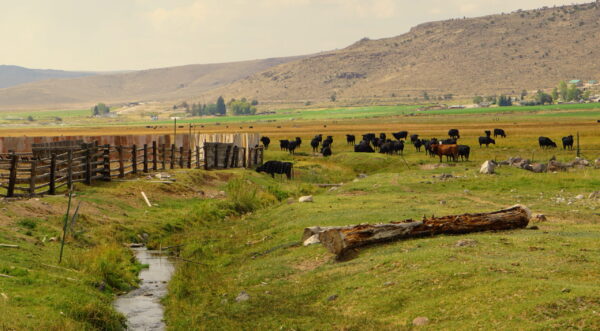In issue 88 of The Byway an article summarizes the public coordination meeting for the GSENM Resource Management plan. In the meeting it appears that Commissioner Pollock stated that grazing was made a right under the Taylor Grazing Act of 1934. However, said Act refers only to grazing privileges; never are they referred to as a right.
Is Commissioner Pollock mistaken or am I?
I am commenting on this in an attempt to better understand the situation.
-Adam Harmon
Boulder, UT
Response from The Byway
Adam, the question about whether grazing is a “right” has been hotly debated for a long time, and you are not the first to ask this! Since this is such an important topic in this region, we have written about it from time to time.
The Taylor Grazing Act of 1934 was the first shot at federal regulation of grazing public lands, but it has since been amended by other environmental legislation. As the law stands now, grazing has been described as both a privilege and a right. Not only that, grazing also has a mandate component to it, and permits are also sometimes described as leases.
That is where all of the confusion comes from, and all the debate. We don’t think Commissioner Leland Pollock was incorrect in referring to grazing as a right, and we would caution people interested in this debate to not get caught up in the mere semantics. Here is why:
Grazing is mandated for all suitable grazing land.
The Department of the Interior (specifically the BLM) determines what lands are suitable for grazing, and once a certain grazing allotment is permitted to a citizen, 43 CFR § 4140.1 requires that permittee to “substantially” graze that land. If they don’t for over two years, the BLM must find someone who will.
This mandate is so strong that when Grand Canyon Trust attempted to “retire” their recently-acquired grazing allotments in 2001, DOI Solicitor William Myers wrote that upon retirement, the BLM would have to issue those permits to others. “If BLM concludes that the lands still remain chiefly valuable for [grazing], the lands must remain in the grazing district,” he said. So Grand Canyon Trust decided to withdraw their “offers” to relinquish their grazing preference.
Current grazing permittees hold a preference right allowing them the first right of refusal to renew their permit at the end of each 10-year term.
That’s why so many ranchers have had the same permits for generations. They can also be sold to other ranchers, who then carry this special preference right.
When ranchers speak of grazing as a right, they are referring to this preference right. The DOI has a mandate that the land be grazed, and the permittee has the sole right to do so for the term, with first right to renew. Because of this, in order to revoke the right, the DOI would have to show that the permittee had not managed the allotment according to its terms and conditions. Even though this is where conservationists have spent much of their time fighting grazing, it is still very uncommon for grazing rights to be stripped from a permittee based on this concept.
Grazing is referred to as a grazing privilege.
Almost all rights granted by the government are subject to certain terms and conditions. While the Taylor Grazing Act conferred a “preference right” to existing permittees, it was later legislation that fleshed out what terms and conditions those permittees needed to live by.
In everyday language, the term “privilege” informally implies that a gift can be revoked without any recourse. But in the case of grazing, this privilege cannot be unilaterally revoked without some cause. This suggests the law’s intended meaning of “privilege” is a formal, legal one — when a privilege is in the form of an actual granted right protected by law.
A lease always confers some rights.
If you were to lease an apartment to live in, you would be granted the right to occupy the space for a specified time, even without being granted ownership of the property. 43 U.S.C. § 315, which governs grazing districts, treats grazing leases in a similar way. These leases grant rights to graze, but § 315 also states these rights are subject to other rights — such as others’ rights to hunt and fish, or others’ existing mining rights.
Because the law refers to grazing on public lands as a preferential right, a privilege and a lease, and because grazing is mandated on suitable lands, we think it is fine for people to describe grazing using any of these terms.
For more information on grazing locally, see our article “Grazing on Public Lands” in Issue 73, published on March 4, 2022. That particular article was probably the longest article The Byway has ever published, and took our staff more than 40 hours to research. It’s a bit boring, but for those who think a lot about grazing, it’s a great bedtime read as an alternative to counting sheep.
– The Byway
Feature image caption: Cows grazing near Fremont.
Read about a Utah bill that adds to this debate in New Utah Bill Could Make Grazing a State Right.

